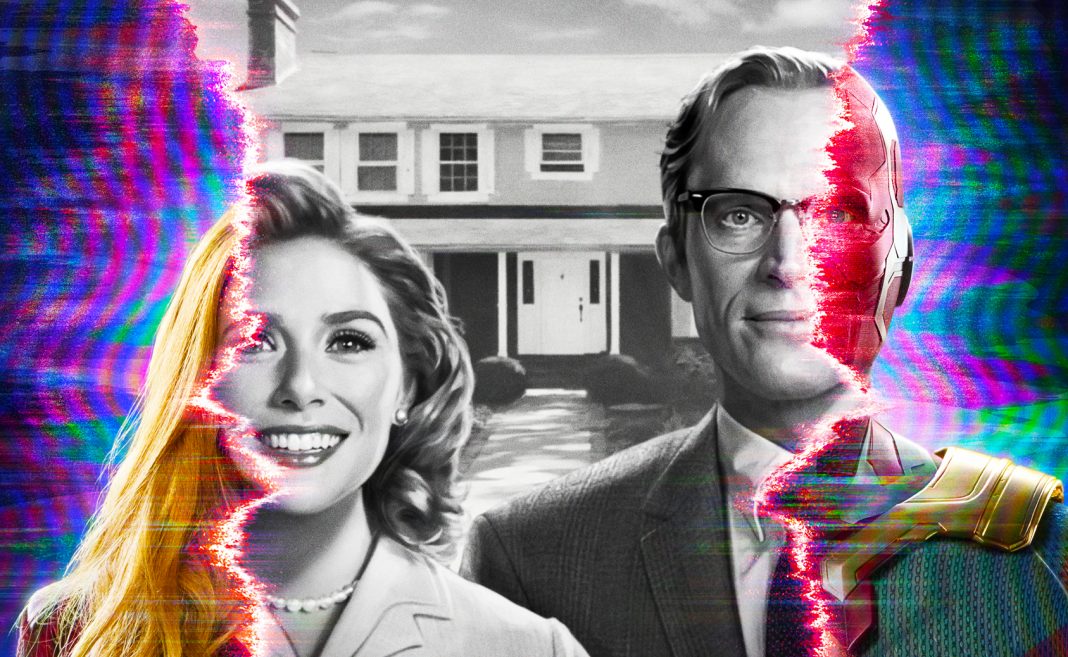Looking back on the legacy of the Marvel Cinematic Universe (MCU), this franchise has become a pivotal part of the entertainment industry. Fans, old and new, have fallen in love with Marvel’s iconic characters and stories that were lifted from comic book pages and given new life on the big screen. So, it was disappointing that among 2020’s many hardships, the year would be the first in a decade without an MCU film.
But while movies were scarce, the rumours were whirling. In late-September 2020, Marvel finally whet fans’ appetites by dropping news surrounding “Phase Four” of its franchise. While excitement soared for upcoming TV shows such as Loki or movies such as Black Widow, no project garnered more attention or anticipation than WandaVision—which set a record for a TV series trailer with 53 million views within 24 hours of its release.
Almost four months since that trailer dominated internet discourse and left fans in a frenzy for new content, on January 15, 2021, the first two episodes of WandaVision debuted on Disney+. If you’re debating on cancelling that subscription, you might want to wait just a while longer.
On the surface, WandaVision isn’t your typical MCU production. It’s a unique show, one that mixes throwback sitcom humour with occasional David Lynchian absurdism, perplexing viewers alongside its confused, meta-aware characters.
The show centres around Wanda Maximoff (Elizabeth Olsen) and Vision (Paul Bettany), both of whom are familiar faces from previous MCU films. Instead of stymying extraterrestrial threats, as per their superhero job description, the newlyweds find themselves living in the sitcom world of Westview, where they must try to blend in amongst its townspeople.
So far, only five of the series’ nine scheduled weekly episodes have been released. Starting with the 1950s Dick Van Dyke Show, each episode pits the couple into a new era of TV sitcoms. As the black-and-white 4:3 aspect ratio morphs into a full screen of colour, odd events start occurring. We notice it, and so do Wanda and Vision.
While we’re pulled in by the show’s sitcom concept, we stay for all its unanswered questions. And there are a ton of questions. For instance, the show occurs chronologically after the modern-day events of Avengers: Endgame, yet it takes place in the 1950s. If Vision died in Avengers: Infinity War, then how is he alive here? Who is controlling Wanda’s actions? How is she aware of the fake audience laughter? And what’s with those eerie commercials?
To compress the show into one sentence: WandaVision is absolutely bizarre. But that’s why we love it. It’s vastly different from anything Marvel has given us. We’re not entirely sure what to expect next, and this uncertainty makes the show exciting.
Olsen and Bettany’s acting is strange in the best way possible. There’s so much life in their characters here that we don’t get in the main MCU films. In WandaVision, each titular character embodies a deeper comical persona alongside their existing superhero likeness, a difficult acting task that Olsen and Bettany pull off with perfection.
Meanwhile, the couple’s friendly neighbours, Agnes (Kathryn Hahn) and Dottie (Emma Caulfield Ford), fit the stereotypical characters of small-town Americana, but with an unsettling twist. Combined with skillful cinematography that jets between character perspectives, visual styles, and period aesthetics, this show captures us and leaves us eager for the next episode to drop.
Each week brings us a new WandaVision episode; each episode unravels another layer behind the show’s sitcom exterior. Piece by piece, the real story slowly surfaces, proving to be much darker than the illusory small-town peachiness. As WandaVision immerses us in this “visionary new age of television,” we can only sit back and watch the answers unfold to all our burning questions.



